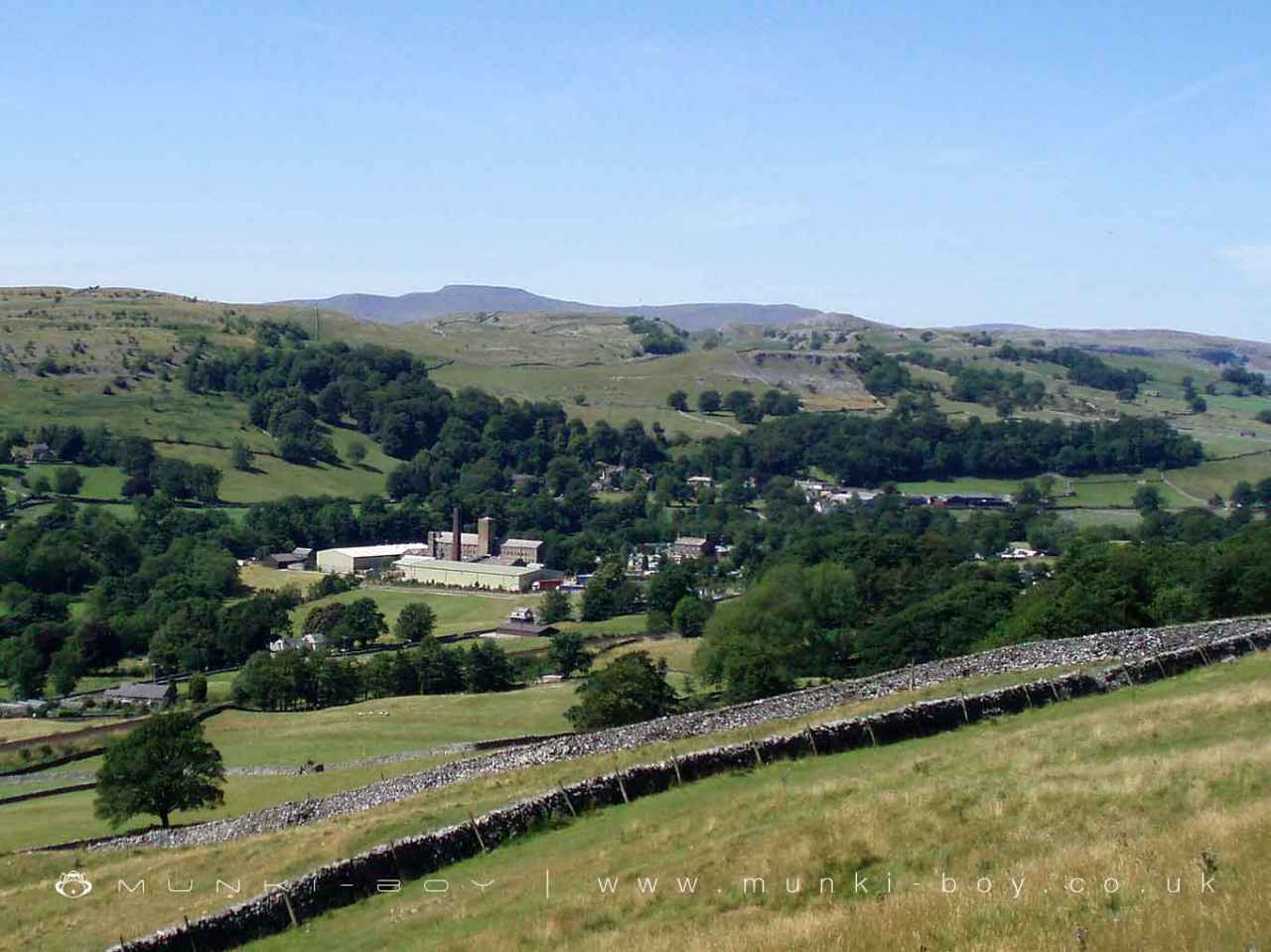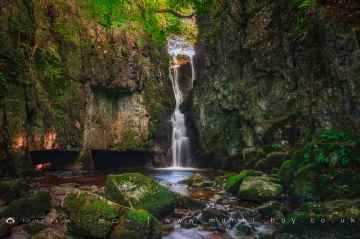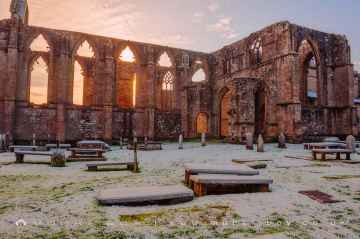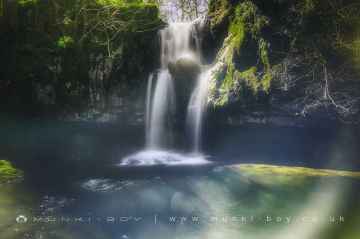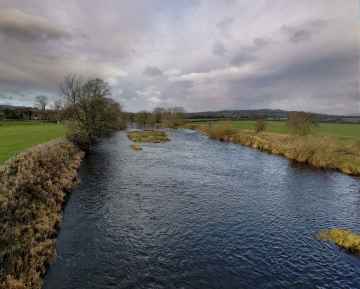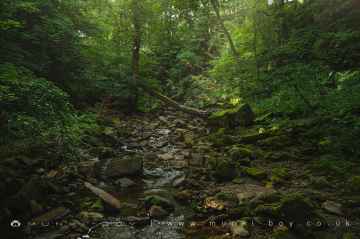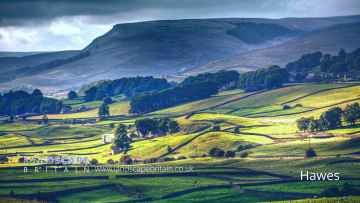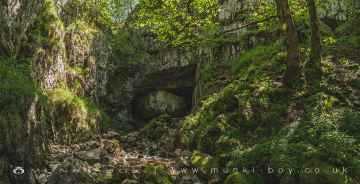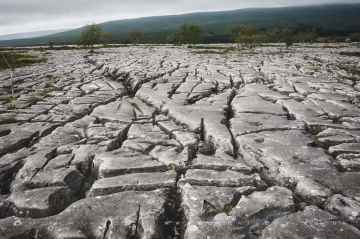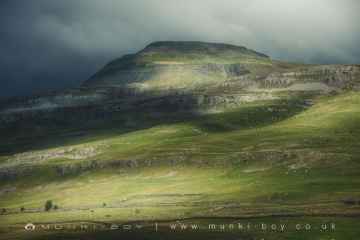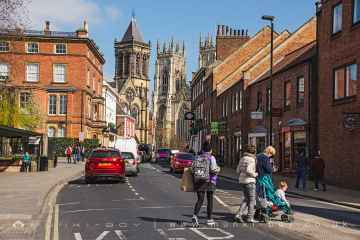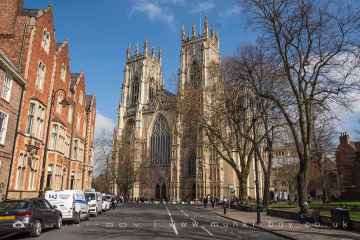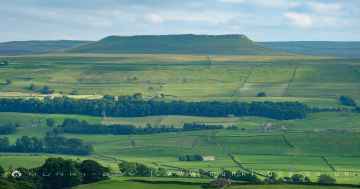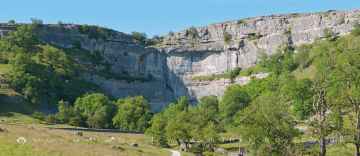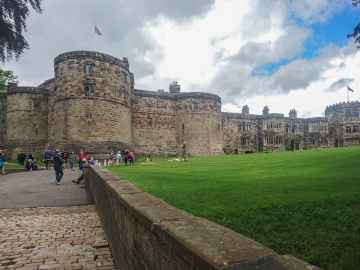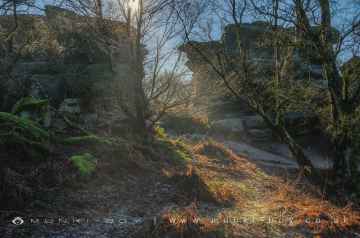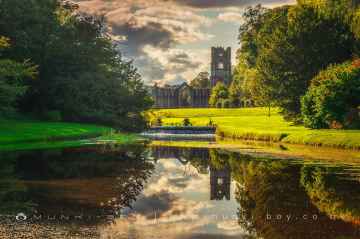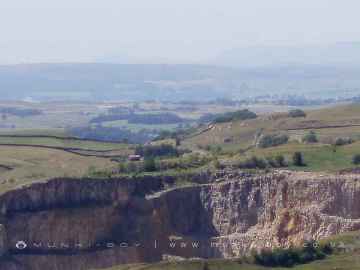Langcliffe is a Village in the county of North Yorkshire.
Langcliffe is a small picturesque village in North Yorkshire, in England. Langcliffe is situated north of Settle, east of Giggleswick and lies within the Yorkshire Dales National Park.
Langcliffe village church dates from 1851 and it’s interior contains memorials to the distinguished Dawson family of Langcliffe Hall. The green altar-frontal was made from a dressing gown, that belonged to Lord Halifax - the former Viceroy of India.
Langcliffe High Mill was built in 1783/84. It was one of Yorkshire’s largest and earliest cotton spinning mills. In the early 1800’s the mill was enlarged to accommodate a steam engine to supplement its water power. Watershed Mill was built in 1785. It is a single storey building just downstream from Langcliffe High Mill. It was built by friends of Richard Arkwright to house his new spinning machines. By the 1820’s it was converted into a weaving mill, housing 300 looms. Watershed Mill closed in 1855 and the owners of Langcliffe High Mill then took it over.
Both mills eventually closed in the 1950s. Langcliffe High Mill became a paper mill for a while. It is now used by a packaging company. Watershed Mill is a shopping centre.
Langcliffe High Mill was made a Grade II listed building on 7 April 1977.
On top of Langcliffe Scar, a limestone outcrop, you can find pre-historic circular banked enclosures, cairns and quarries. There was an earlier settlement near to the foot of the scar than it is now, in a field called Pesbers by the lane to Winskill.
One of the local attractions is The Hoffmann Kiln. It was built in 1873 for the Craven Lime Company. Lime burning became a key local industry. The kiln gets it’s name from the German inventor Friedrich Hoffman who patented it in 1858. The Hoffmann Kiln at Langcliffe had 22 chambers. Limestone was continuously burned in a circuit, that took about six weeks to complete. It was a very labour intensive job and provided lots of the local residents with employment.
The lime kiln and quarry closed in 1931, though the kiln was fired up again in 1937, but closed permanently in 1939. The chimney was due to be demolished in 1951, but the day before the demolition, the chimney fell down.
Around one mile to the east of Langcliffe is another local attraction. A large glacial erratic boulder, approximately 8 feet high that rests on small limestone stilts at the edge of a limestone ridge. It is shaped like a giant toe and has been named Samson’s Toe. There is a local legend that says Samson the giant lost his footing when jumping across from Langcliffe Scar or Ribblesdale, breaking off his toe in the process. It is more likely the boulder was deposited into its resting place in the last Ice-Age 12,000–13,000 years ago.
Langcliffe postcode: BD24 9NQ
There are great places to visit near Langcliffe including some great waterfalls, ruins, historic monuments, hiking areas, villages, rivers and streams, towns, caves, limestone pavements, mountains, cities, historic buildings, hills, geological features, castles, old mines, country parks, parks, gardens and ancient sites.
There are a number of waterfalls near Langcliffe including Catrigg Force, Lockin Garth Force, Whitfield Gill Force, Slape Wath Waterfall, Mill Gill Force, Cotter Force, and Aysgill Force.
There are a several good ruins in the Langcliffe area like Bolton Abbey, Byland Abbey, Norton Tower (ruin), Easby Abbey (ruin), Fountains Abbey and Studley Royal Water Garden, Fountains Abbey (ruin), and Trig Point on Warrendale Knotts.
Don't miss Bolton Abbey, Rylstone Crag and Rylstone Cross, Culloden Tower, and Robin Hood's Well (Fountains)'s historic monuments if visiting the area around Langcliffe.
Deepdale, Cotterdale, Southerscales, Ingleton Waterfalls Trail, Swilla Glen, Baxenghyll Gorge, and Raven Ray are some of Langcliffe best hiking areas to visit near Langcliffe.
Langcliffe has some unmissable villages nearby like Pool-in-Wharfedale, Askrigg, Hardraw, West Burton, Bainbridge, Aysgarth, and Malham.
Langcliffe's best nearby rivers and streams can be found at Whitfield Beck, Mill Gill, Hardraw Beck, River Wharfe, and Walden Beck at West Burton.
Langcliffe's best nearby towns can be found at Hawes, Skipton, Grassington, Richmond, Middlesbrough, Harrogate, and Settle.
There are a number of caves near Langcliffe including Great Douk Cave, White Scar Cave, Yordas Cave, Gaping Gill, Janet's Cave, Horseshoe Cave, and Jubilee Cave.
The area around Langcliffe features a number of interesting limestone pavements including Southerscales, Malham Cove, and Warrendale Knotts Limestone Pavement.
There are a number of mountains near to Langcliffe including Ingleborough.
Langcliffe has some unmissable cities nearby like York, and Ripon.
The area around Langcliffe features a number of interesting historic buildings including York Minster, Marton House, Norton Tower (ruin), Church of St Peter - Rylstone, Culloden Tower, and Beggar’s Bridge.
Addlebrough, Embsay Crag, Rylstone Crag and Rylstone Cross, Warrendale Knotts, Giggleswick Scar, Blua Crags, and Sugar Loaf Hill are some of Langcliffe best hills to visit near Langcliffe.
The area around Langcliffe boasts some of the best geological features including Malham Cove, Grassington Lead Mines, and Brimham Rocks.
Don't miss Skipton Castle, Richmond Castle, and Bolton Castle's castles if visiting the area around Langcliffe.
There are a number of old mines near to Langcliffe including Grassington Lead Mines.
Don't miss Brimham Rocks's country parks if visiting the area around Langcliffe.
There are a number of parks near Langcliffe including Fountains Abbey and Studley Royal Water Garden, Fountains Abbey (ruin), and Studley Royal Water Garden.
There are a number of gardens near to Langcliffe including Fountains Abbey and Studley Royal Water Garden.
The area around Langcliffe boasts some of the best ancient sites including Schoolboys Tower, Jubilee Cave, and Victoria Cave.
Langcliffe History
There are some historic monuments around Langcliffe:


















